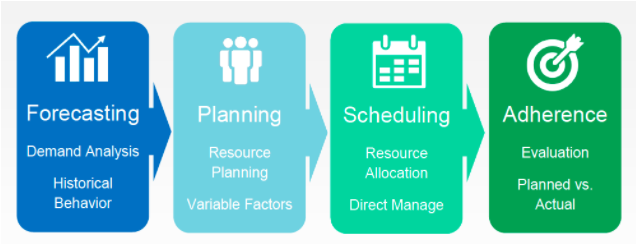You realize the importance of creating better patient experiences – eighty-four percent of hospital leaders rank it as a top priority.
So how can you take the lead in your clinic or healthcare facility?
Start improving patient experiences now.
In an increasingly consumer-oriented healthcare environment, patients expect a personalized experience. Something akin to booking a holiday or visiting the shopping mall. Patient Flow Management (PFM) systems help create that type of experience; allowing patients to manage their appointments, facilitating virtual check-in, and reducing patient wait times.

But wait times and appointment management, are just the tip of the PFM iceberg. The real value is in the data that lies below the surface; data collected throughout the patient journey, that when properly leveraged, can help drive and promote patient engagement.
At its simplest, PFM data can reveal differences between what hospital management believe to be patient expectations, and what patient expectations really are. For instance, by monitoring the various stages of the patient journey, hospital administrators have access to real-time data at every touch-point, giving the insight they need to align hospital services with patient expectations.
Take the typical clinic setting; there are essentially four generic stages: “Intake”, “Screening”, “Encounter”, and “Discharge”. When viewed as a service queue, bottlenecks, such as excessive wait times and long lines, become visible. Staff can quickly identify at which stages the patient flow is suffering the most, and more importantly, take insightful decisions on how to re-allocate resources to improve patient throughput, without negatively impacting other service queues.
The ability to collect patient journey data extends beyond PFM systems to include data from 3rd party applications. By integrating PFM solutions with hospital databases, patient records and pharmacy filling robots (PARATA, ScriptPro, Cerner) patient record linking can identify the number of patients who dropped out of the queue before filling their prescriptions.
When pharmacies track prescription fulfilment, automation analytics provide updates on the status of each script. If for example, a patient does not collect their medication, they receive a notification reminding them to collect, and the best time to visit the pharmacy. Reducing the instance of abandoned scripts, and the likelihood of readmission for additional care.
Start taking advantage of data inherent in your PMFs system, by focusing on these four key areas:

-
Forecasting—involves data collection and analysis of demand for services hourly, daily, weekly, monthly or seasonally. Variables like holidays, seasonal trends and weather are taken into account.
-
Planning—involves incorporating variables that may affect demand to create a model for predictive calculations that can be used to plan for meeting the demand of various scenarios.
-
Scheduling—dynamically allocate staff to meet the predicted demand, and directly manage your resources to create a schedule.
-
Adherence—continuously evaluate your planned schedule when executed, and analyze the performance and accuracy of your model.
Trends in analytics can be used to anticipate busy times and the demand for services at your healthcare facility, and to help identify inefficiencies at different points in the continuum of care to allow you to examine and improve in these areas.
If you're interested in learning more about leveraging your Patient Flow Management data or implementing a PFM solution, schedule a demo with one of our Patient Experience experts.




